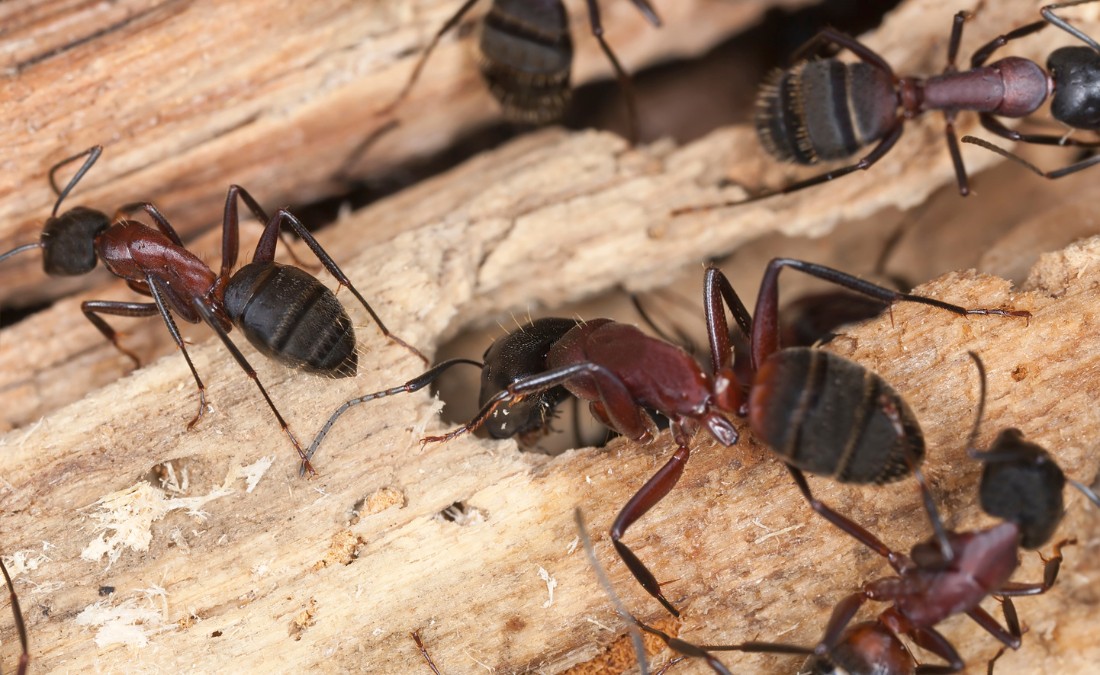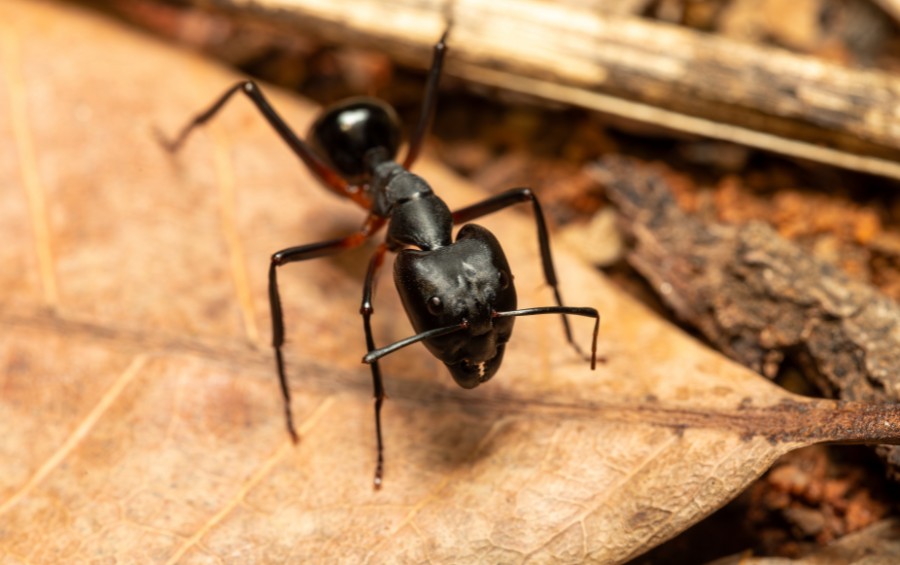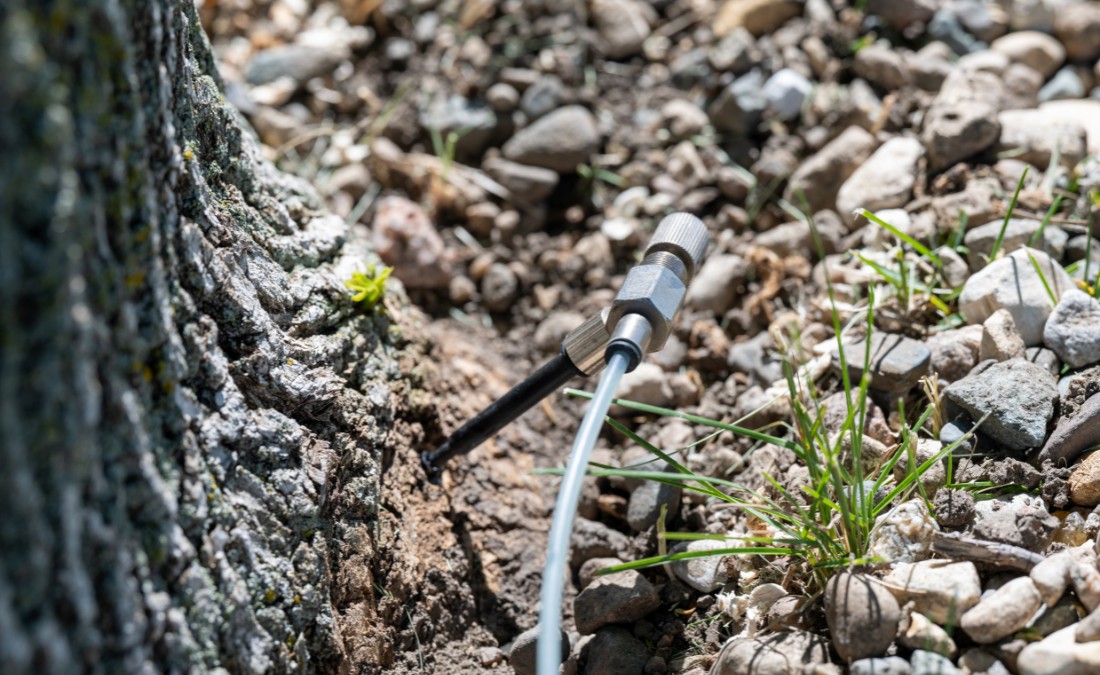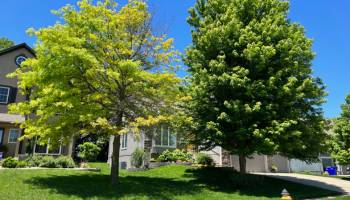Are Carpenter Ants Harming Your Tree? Here’s What You Should Know

Seeing carpenter ants on your tree? Arbor Masters shares why they’re a sign of hidden decay—not a pest problem—and what to do next.
Contrary to popular belief, carpenter ants don’t kill trees – they reveal what’s already happening beneath the bark.
If you spot a stream of black ants crawling on your tree, don’t panic – they’re not destroying it. Carpenter ants are drawn to what’s already decaying. Their presence points to injury, soft wood, or hidden rot that needs attention – not extermination. The real fix isn’t pesticide, it’s professional tree care that restores health and strength.
Key Takeaways:
- Carpenter ants don’t cause decay – they move into wood that’s already dead or damaged.
- Their presence is a sign your tree may need attention, not an infestation that needs treatment.
- Chemical sprays won’t solve the problem – instead, focus on restoring the tree’s health.
- Certified arborists can help strengthen your tree through pruning, fertilization, and soil care.
- With proper care, many trees hosting carpenter ants can continue to thrive for years.
The Truth About Carpenter Ants and Tree Decay
Not sure what to make of those ants crawling on your tree? You’re not alone.
Carpenter ants are often misunderstood and seeing them can raise a lot of questions. Before assuming your tree is in trouble or you’re in dire need of a pest control solution, it’s important to understand what these ants are, what they’re doing, and what their presence really means for your tree.

What are carpenter ants?
Carpenter ants are some of the most common ants in America. They have a reputation for being a destructive pest that destroys wood, but this isn’t true.
Carpenter ants make their nests by chewing out tunnels and chambers in wood. They do not eat wood – they chew through it to create nests and tunnels, mostly in wood that’s already soft or decaying. That’s why they leave behind sawdust-like shavings near their nesting sites.
Homeowners often mistake carpenter ants for termites, further leading to their bad reputation. Carpenter ants are distinct thanks to their black color and segmented bodies. If you aren’t sure what you’re dealing with, have an expert take a look.
Like many insects, carpenter ants play a crucial role in our ecosystem. Scientists refer to them as recyclers – helping break down dead trees and branches, speeding up the natural decomposition process. Without them, our forests would be cluttered with decaying material that takes far longer to return to the soil.
How are carpenter ants different from other ants I might see in my yard?
Most ants you see around your yard – like odorous house ants (also called sugar ants), pavement ants, or fire ants – are foragers. They oftentimes enter homes in search of sweets or protein and are considered a nuisance.
Carpenter ants are different. They don’t invade kitchens for crumbs – they look for soft, decaying wood to build their nests.
What does it mean when you see carpenter ants in your trees?
Carpenter ants don’t create decay – they find it. Their presence often signals:
- Internal rot or cavities
- Dead limbs or branches
- Past injuries from storms pruning, or mechanical damage
- Aphid infestations (carpenter ants are attracted to the honeydew aphids produce)
In short, ants are exploiting a weakness that’s already there. The ants themselves are rarely the concern – the condition of the wood is.

Carpenter ants in your trees can be a sign that your tree has dead wood that requires pruning.
What should you do when you notice carpenter ants in your trees?
If you spot carpenter ants, don’t call an exterminator – call an arborist. These ants are signs of underlying decay, not the cause of it. A Certified Arborist can assess the tree’s condition, locate any deadwood or structural issues, and recommend the best course of action. Common solutions may include:
- Pruning to Remove Deadwood: Deadwood serves no purpose for your tree, and tree pruning is necessary when you have dead branches. These limbs are also more prone to breaking during a storm, putting your property and family at risk.
- Fertilization to Support Recovery: Fertilization can give a tree a quick boost in nutrients. A tree will use this energy to aid in compartmentalizing any decay and healing wounds.
- Tree Preservation to Improve Overall Vigor: Keeping a tree generally healthy will reduce the risk of decay developing in the first place. An arborist may suggest tree preservation services, such as breaking up compacted soil with an air tool to improve root health.
Do I need to remove a tree that has carpenter ants?
No, in most cases, you will not need to remove a tree because it has a carpenter ant infestation. During an inspection, an arborist will only suggest removing the tree if it has decayed to the point where it is no longer safe to remain standing.
In most instances, a professional can save your tree with preservation services and help shepherd it to the end of its life.
Do carpenter ants in my trees require chemical treatment?
No. Treating the ants doesn’t fix the problem, it simply masks it.
Pesticides don’t reach the heart of the issue: decaying wood or declining tree health. Worse, applying chemicals to trees can harm beneficial insects, pollinators, and the ecosystem around the tree. A healthier tree will naturally become a less attractive habitat for carpenter ants.
Don’t Treat the Ants. Let Arbor Masters Treat the Tree.
When carpenter ants show up, it’s not time to spray – it’s time to listen. These ants are signaling that something inside your tree needs attention. With thoughtful care from Certified Arborists, your tree can recover its strength, restore its structure, and continue providing shade, beauty, and value for years to come.
The experts at Arbor Masters specialize in preserving tree health with pruning, fertilization, breaking up compacted soil, and more. Carpenter ants should serve as a wake-up call that your trees could use a checkup. Call us today at 918-258-3444 or request a quote online.

Want More Like This?
Get the latest local news, tree care tips, special offers, and company updates directly to your inbox! It's easy to subscribe and there's no spam - we promise.
"*" indicates required fields





